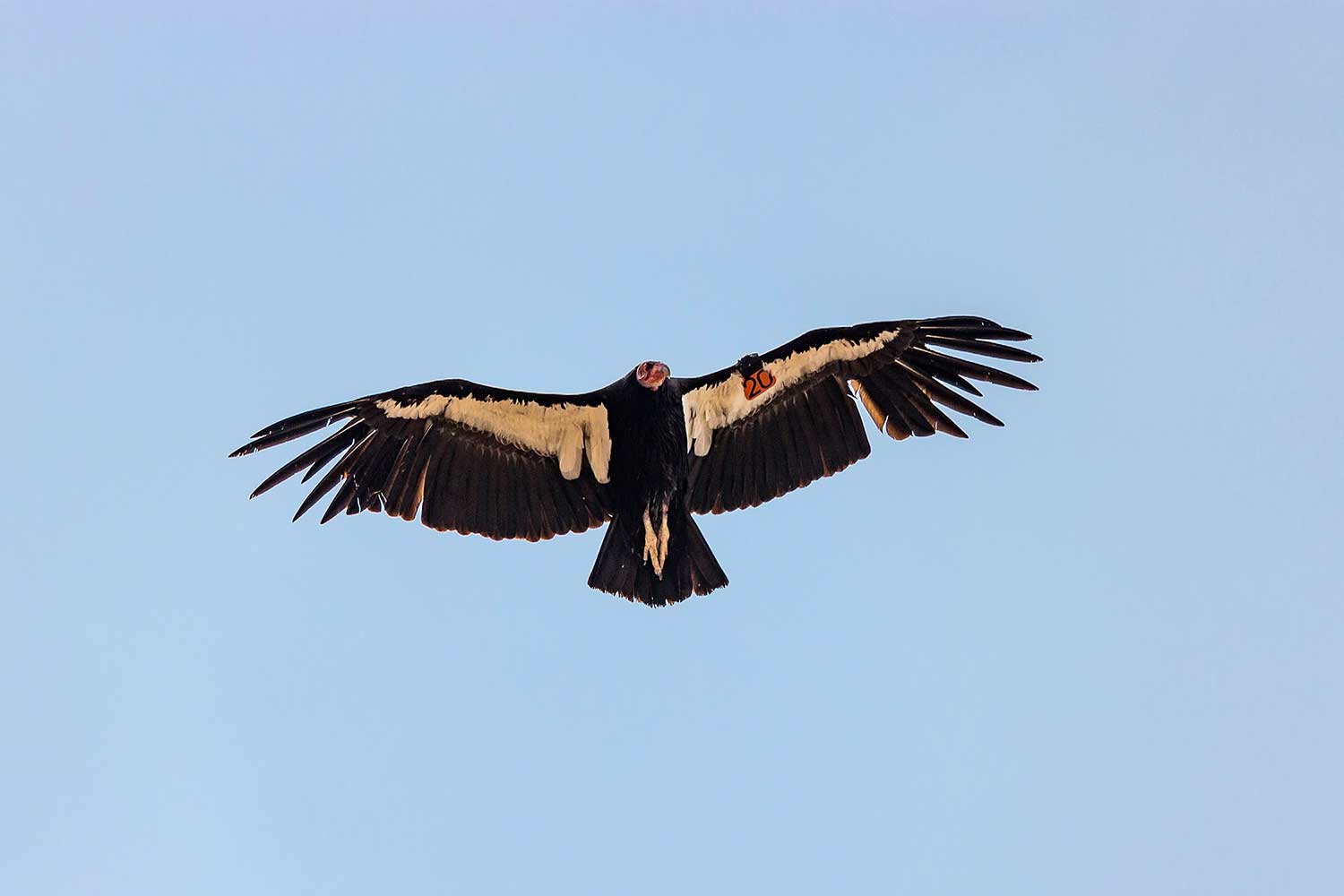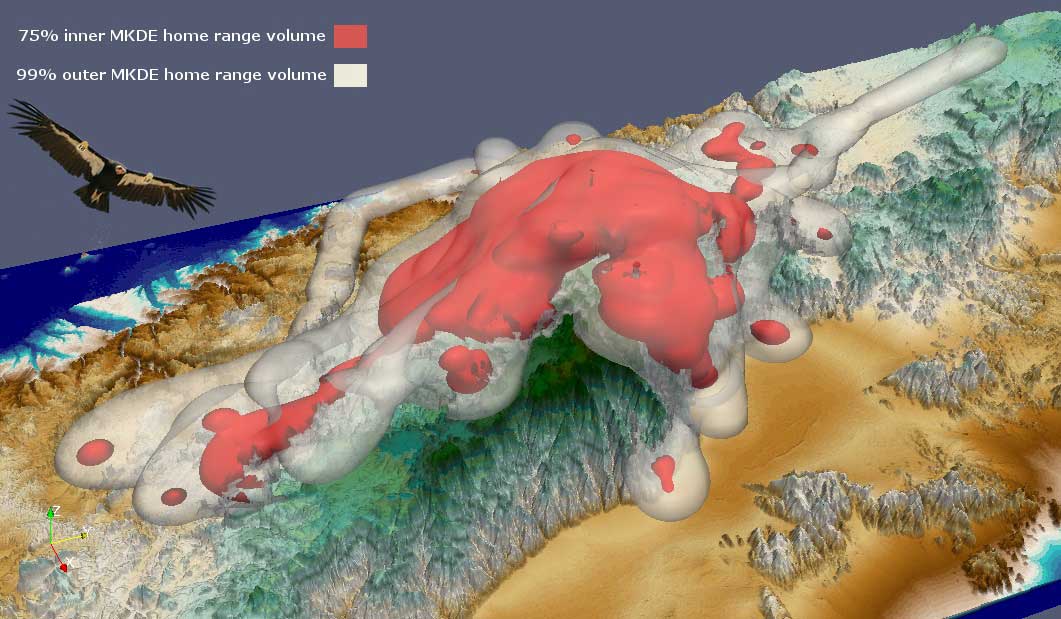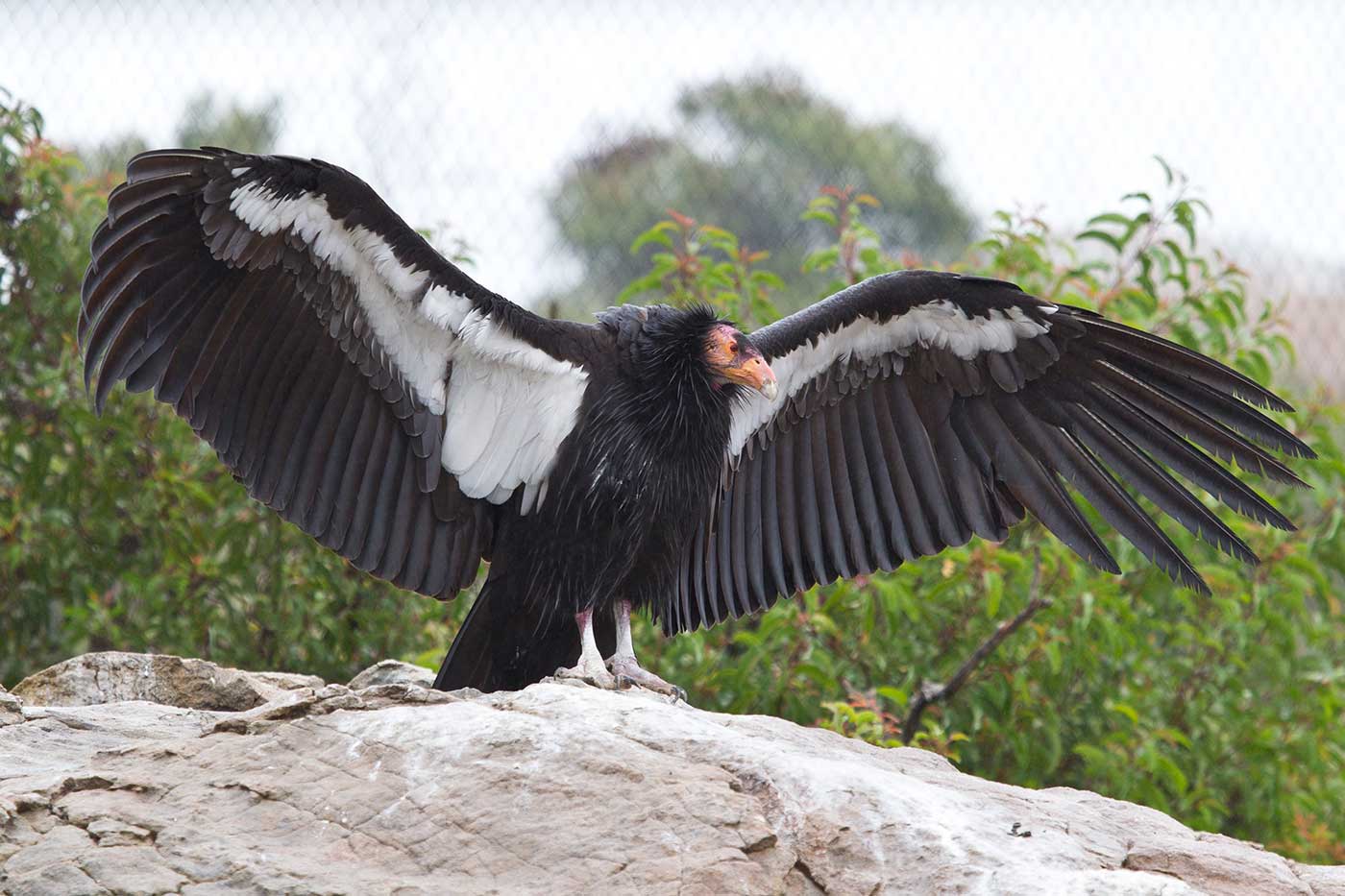
By:
- Cynthia Dillon
Published Date
By:
- Cynthia Dillon
Share This:

Condor airborne in the third dimension, which SEG will use to compute home range movements. Photo credit: San Diego Zoo Wildlife Alliance.
High-Performance Computing, Ecology Experts Team Up to Ease Study of Wildlife Movements
NSF funds efforts by San Diego Supercomputer Center, San Diego Zoo Wildlife Alliance and ASU to create new Spatial Ecology Gateway
The title of an Old West anthem and a Disney film, “Home on the Range” loosely describes the work of spatial ecologists. These field experts study the movements of animals within a specific geographic area—their “home range.” Historically, this type of study was limited to a small subset of experts with the right tools. Now, a group of researchers from San Diego Supercomputer Center (SDSC) at UC San Diego, San Diego Zoo Wildlife Alliance (SDZWA) and Arizona State University (ASU) has made it possible for others to join the herd through the Spatial Ecology Gateway (SEG).
Funded by the National Science Foundation’s (NSF) Office of Advanced Cyberinfrastructure, SEG is envisioned as an innovative computational resource that will enable researchers, students, wildlife managers and others to upload biotelemetry data—typically Global Positioning System (GPS) readings—and construct home ranges that allow them to interpret animals’ use of space. It will allow for exploration of important problems in ecology, including managing habitat impacts like shrinking home ranges, while letting users focus on the science rather than on mastering the technology helpful to their work.
“A lot of GPS use is tracking data, but most ecologists are not computational researchers. They are more at home with fieldwork that involves putting collars on bears and finding spiders on the rainforest floor,” said Robert Sinkovits, director of Scientific Computing Applications at SDSC and principal investigator of the project. “SEG will be a tool to make the algorithm accessible to them.”
Spatial ecologists typically work with two-dimensional (2D) data, which is adequate for tracking many animals who move by walking. But not so much for animals like condors and other birds who fly in the vertical dimension.

Image map of a condor’s home range. Pink depicts inner home range volume; white depicts outer home range volume. Credit: San Diego Zoo Wildlife Alliance
Wanting to find a way to address the expense of computation in three dimensions (3D), Sinkovits and Mona Wong (SDSC), James Sheppard (SDZWA) and Jesse Lewis (ASU), proposed SEG, which is analogous to the trends in making bioinformatics tools (e.g., Basic Local Alignment Search Tool or BLAST) widely available through the web for anyone with questions or insights to answer problems in genomics.
The collaborators turned to 3D algorithm developer Jeff Tracey at the United States Geological Survey (USGS). Then, they sought the help of a student at SDSC who performed the 3D-code work adapted from a technique by Lewis. As a result, SEG users will have the option to generate 2D or, where applicable, 3D home ranges. Users will also be provided with less computationally intensive tools to perform exploratory analyses.
“Many animals have a major 3D aspect to their movements, such as deep diving whales and soaring birds. Wildlife biologists have been deploying miniaturized biotelemetry devices to track the 3D movements of wild animals for decades, yet only very recently have they been able to investigate the full 3D nature of these ecological ‘Big Data’ because of limitations in mathematical methods and the high computing demands needed to generate realistic 3D models of animal home ranges,” explained Sheppard. “Our initiative will remove these roadblocks by enabling biologists to crunch their animal tracking datasets using powerful 3D home range estimators coupled with the extraordinary computing power of the San Diego Supercomputer Center.”
Sinkovits said that SEG targets a user base of academic ecologists and wildlife managers, but others with interest in addressing ecological challenges can benefit from it, too. For example, applications of SEG may extend to classroom projects, basic research into problems in wildlife ecology, environmental impact studies and mitigation of adverse outcomes, such as habitat fragmentation or increased human-wildlife interaction resulting from new development.

Condor at rest, wings spanned. Photo credit: San Diego Zoo Wildlife Alliance.
“The Spatial Ecology Gateway will make computationally intensive methods evaluating animal space use available to a wider audience, which can help us better manage and conserve a variety of wildlife species in the US and globally,” said Lewis.
Since the concept of the home range was introduced in the 1940s, ecologists have progressed from very simple to more complex quantitative approaches to studying how animals move within their environments. Although SEG will eventually deploy multiple tools for constructing home ranges, its initial emphasis will be on the Brownian Bridge Movement Model (BBMM)—a model that provides an estimate of the movement path of an animal using discrete location data obtained at relatively short intervals of time. The BBMM has helped revolutionize understanding of the use of space in animal populations.
“It is such an exciting project,” said Sinkovits. “If I retired tomorrow, this is the thing I would still want to do with my free time. It’s interesting, impactful, and has real-life applications. It gives us a tool to develop more intelligently around habitat impacts—things like cut-off corridors and turtle tunnels.”
This award by the NSF Office of Advanced Cyberinfrastructure is jointly supported by the Division of Biological Infrastructure within the NSF Biosciences Directorate, and by the Division of Information and Intelligent Systems within the NSF Computer and Information Science and Engineering Directorate.
Share This:
You May Also Like
Stay in the Know
Keep up with all the latest from UC San Diego. Subscribe to the newsletter today.


